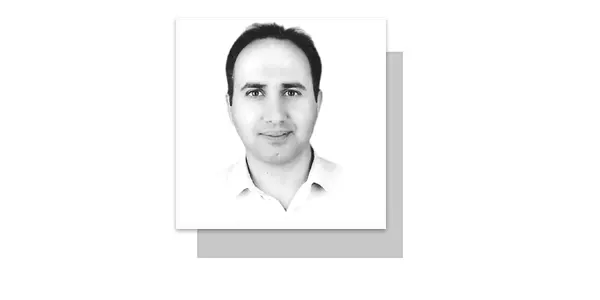THE gradual deterioration of social infrastructure, recurrent poverty, and growing regional disparities eroded civil society and expedited Pakistan’s militarization. Gender-related crimes of various types, social and religious intolerance, disparities in educational systems, population explosion, food security, socioeconomic instability, health-care, law and order, unplanned rapid urbanisation, controlled media and crippled democracy, external war threats with neighbouring states, and many other issues are high priorities in Pakistan.
A substantial proportion of the population remains deprived of even the minimum conditions of survival; however, ‘the powerful’ are engaged in glorifying their existence. A recent study shows that as much as 64 percent of the population does not have access to piped drinking water in the country. The percentage without ‘safe’ drinking water is probably larger since piped drinking water frequently carries bacteria. Almost 47 percent of the people are unable to consume 2100 calories a day per person. The housing situation is so bad that 81 percent of the housing units have an average of 1.7 rooms which are inhabited by an average of seven persons. The literacy rate is low and the standards of those few who make it to college or universities are plummeting at a dizzying pace.
The overall consequence of these features is a growing pressure on a fragile democratic polity. A significant section of the population perceives that there is nothing in this growth process for them, which is a factor in the resurgence of sub-national groups. There are significant and long-lasting national ramifications to the vulnerability of national cohesiveness. Persistent elite enslavement and manipulation of the populace, extreme poverty and high unemployment, sectarianism and rising radicalization, prejudice and scepticism, a crisis of identity and ideological split, proxies and the remnants of fifth generation warfare, corruption and institutional failures, discrimination and cronyism, escalating discontent and brain drain continue to eat away at the very foundation of our society.
Consequently, a new conflict is emerging between centralized state structures and a polarized polity, which is associated with a heightened level of violence in society. Failure to devise a strategy that could come to grips with this development crisis has been an important factor in social polarization and the resultant difficulty in strengthening democratic institutions, particularly a culture of democracy. In recent years the polarization of society along religious, political, ethnic, communal and regional lines have been accompanied by an undermining of social values through which diverse communities had lived together in a pluralistic society.
The social polarization is now fuelled by violence and various forms of banditry which have reached a scale that threatens not only the credibility of political institutions but raises the question of whether governance based on a centralized state structure is feasible at all. Political instability is scaring away foreign investment and hurting the economy. Back in the 60s, Pakistan was one of the fastest growing economies in the developing world and it was destined to rise up the economic ladder. In 1965, GDP per capita of Pakistan was $116. The countries which were lagging behind us in the 1960s have overtaken us a long ago. Today Pakistan’s GDP per capita is around $1,550 whereas GDP per capita of India, China and South Korea are around $2,601, $8,123 and $27,538 respectively.
We have 40% food inflation which is 5th highest in the world, and have the 6th highest interest rate in the world. Politicians are commonly blamed for the politico-economic crisis and are viewed in isolation, sans regional comparisons, to argue that our politicians and democratic system carry exceptional faults, which must be fixed via exceptional means. Comparisons are done ineptly with developed states to condemn our system. In the 1990s, unelected ‘powerful institution’ overtly dismissed assemblies, often following concerted campaigns by loyal analysts and journalists to paint the illusion of a complete meltdown of the system.
Since 2010, things have become more covert with no unnatural dismissals of assemblies, but only of prime ministers via dodgy verdicts. Political incompetence is not but overambitious unelected ‘powerful institutions’ are the real cause of the steady decline of democracy in Pakistan. Over seventy-six years of an establishment-dominated political order, whether directly or in cooperation with civilians, has acted as a speed breaker to a prosperous, democratic and politically stable Pakistan. Personal pursuits of power by implying corruption, nepotism and dishonesty have not helped to rebuild institutions but damaged it further. More unfortunately, the judgments and the accountability process we see today, in which favourites are being forgiven while those not falling in line have their due share of trials and blackmailing of different kinds. We had been at many political turning points before, only to see them turn into nothing. Yet anarchy, insecurity and a lack of consensus on all vital issues characterize the domestic scenario. The ideology of being one nation has long ago defaced with rising resource inequality and growing social divisions, polarisation in politics and poor governance, ethno-linguistic and religio-political tendencies, megalomaniacal leaders and their conflicting agendas, institutional friction and power clash, xenophobia and sensitization of racial identities, opposing ideologies and fundamentalism, scepticism between the centre and smaller provinces, and so on.
Development benefits in Pakistan have primarily favoured privileged classes, with successive governments prioritizing egotism. Despite global economic, technological and social changes, the country remains unprepared to adapt. Pragmatic policies are needed to manage inherent divisions within communities. To integrate the nation, inclusive economic strategies must ensure equal rights and essential services for all. This includes strengthening federating units, promoting a unified political perspective, equitable resource distribution, land reform, equal educational opportunities, organizational coherence and accountability. Genuine democratic principles, multiculturalism and dialogue with dissenting groups are also crucial. The main concern is failing to see beyond immediate issues and grasp broader implications.
—The writer is PhD in Political Science and visiting faculty member at QAU Islamabad.
Email: zafarkhansafdar@yahoo.com









